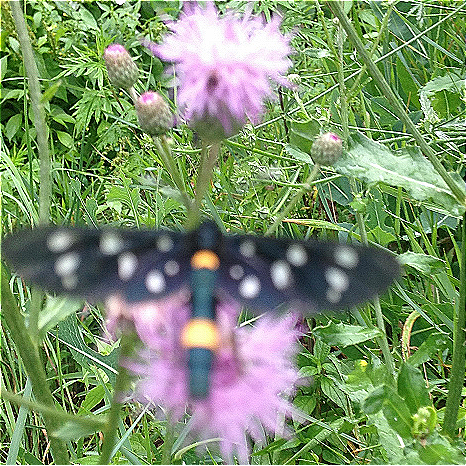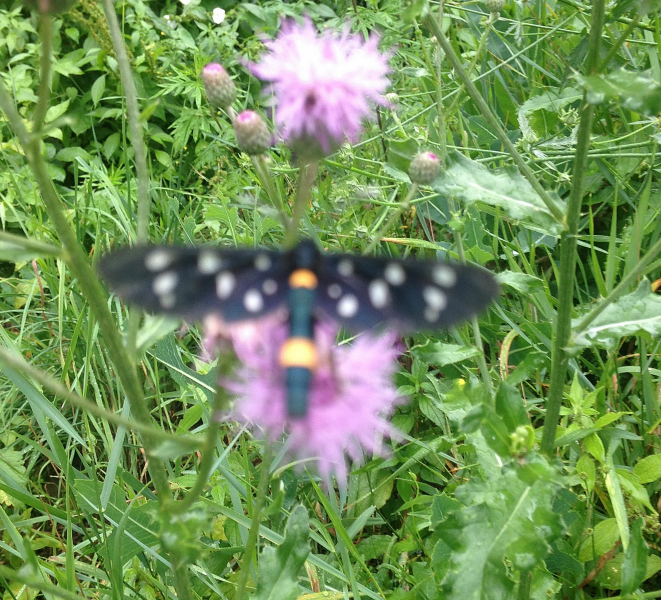La farfalla Amata phegea (Nine-spotted Moth) is a moth, belongs to the family Erebidae and is a widespread Lepidoptera. However, it is very difficult to distinguish from the many similar species : Amata emma and the Zigene.

Some classify it in the family Arctidae or the Ctenuchinae, a subfamily of the Erebidae (1).
This moth stores oleander glycoside substances in its body tissues. It contains a histamine-like substance that increases capillary permeability in laboratory rats (2).
Distribution. The Nine-spotted Moth is found throughout Europe, Asia, and North Africa, favoring sunlit meadows, woodland edges, and clearings.
Morphology.
Size: The wingspan of this moth typically ranges from 3 to 4 cm.
Weight: As is the case with many moths, the Nine-spotted Moth's weight is estimated to be a mere few grams.
Colors: It features transparent wings with black edges and scattered black spots. The body is generally black with yellow or white rings, giving it a distinctive appearance.
Life Cycle. The Nine-spotted Moth undergoes a full metamorphosis. Host plants for the caterpillars vary but often include different low-growing herbs.
Dietary Habits. The caterpillars feed on various herbs, while the adult moths seek nectar from a range of flowers.
Conservation Status. The Nine-spotted Moth is generally common in its distribution areas, but habitat loss might pose a threat in certain regions.
References_____________________________________________________________________
(1) Schneider D, Legal L, Dierl W, Wink M. Androconial hairbrushes of the Syntomis (Amata) phegea (L.) group (Lepidoptera, Ctenuchinae): a synapomorphic character supported by sequence data of the mitochondrial 16S rRNA gene. Z Naturforsch C. 1999 Dec;54(12):1119-39.
(2) Rothschild M, von Euw J, Reichstein T. Cardiac glycosides (heart poisons) in the polka-dot moth Syntomeida epilais Walk. (Ctenuchidae: Lep.) with some observations on the toxic qualities of Amata (=Syntomis) phegea (L.). Proc R Soc Lond B Biol Sci. 1973 May 15;183(1072):227-47
![]() Amata phegea (Butler)
Amata phegea (Butler) 


